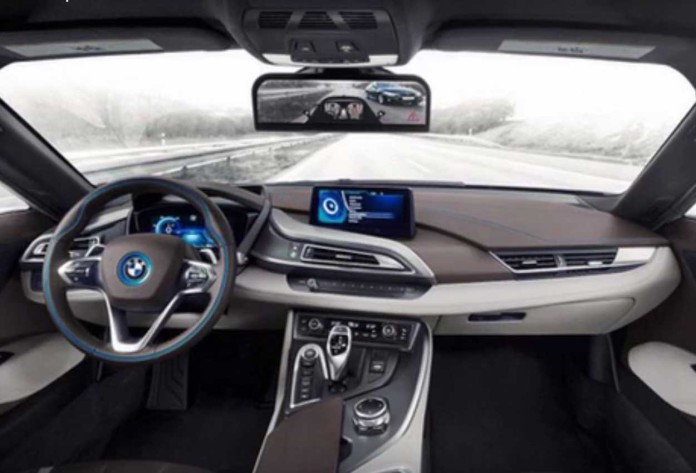TOKYO – In a mirrorless car, cameras replace the side mirrors mounted near the left and right doors, and the driver uses monitors inside the car to make safety checks. The rearview mirror is replaced with a monitor, which shows images taken by a camera mounted on the back of the vehicle.
Japanese automobile and parts manufacturers are developing “mirrorless vehicles” that use cameras and monitors instead of traditional rearview and side mirrors.
In June, the Land, Infrastructure, Transport and Tourism Ministry lifted a ban on designing and manufacturing mirrorless vehicles. Actual sales are expected to start around 2018, but hurdles regarding safety and other areas still need to be cleared.
In a mirrorless car, cameras replace the side mirrors mounted near the left and right doors, and the driver uses monitors inside the car to make safety checks. The rearview mirror is replaced with a monitor, which shows images taken by a camera mounted on the back of the vehicle.
The transport ministry revised safety criteria and other standards for road transport vehicles to allow mirrorless cars to drive on public roads, aligning Japan with new vehicle safety criteria adopted by the United Nations.
The absence of side mirrors will likely reduce air resistance, which could improve fuel efficiency. Also, areas obstructed by the side mirrors would become visible, reducing blind spots. At night and during bad weather, image processing software could help increase visibility.
Major domestic and foreign auto parts makers have taken the lead in developing the necessary technology. The French firm Valeo S.A. is moving forward on developments made using an experimental vehicle in Japan, and plans to start mass producing parts for mirrorless cars in 2018.
Shizuoka-based Murakami Corp., a leading manufacturer of rearview mirrors, has also developed a system of cameras and monitors. The company aims to start mass production in fiscal 2018, and is currently trying to sell its system to key domestic automakers.
Manufacturers such as Toyota Motor Corp. and Nissan Motor Co. have already revealed prototype cars, and are discussing their designs and other plans with parts makers and others to put the ideas into practical use.
The main issue is how to improve precision for safety purposes. Even a small time lag between camera and monitor could lead to serious accidents.
Steps also need to be taken so that drivers accustomed to side mirrors do not get flustered. “We can’t just replace the mirrors with cameras. We need to find ways to support safe driving,” said Shoji Akiyama, a director at Valeo Japan Co.
For example, one automaker is considering a function that would allow a vehicle to accelerate if the car behind it looked like it was about to cause a rear-end collision.
Equipping vehicles with cameras and monitors “would increase the sales price of a regular car by at least 100,000 yen,” an employee of a major automaker said. Hence, striking the right balance between safety and price is another issue automakers need to tackle.





